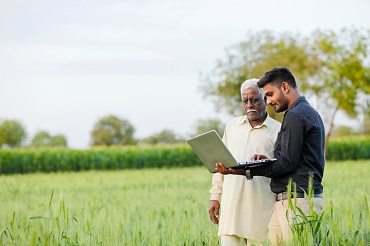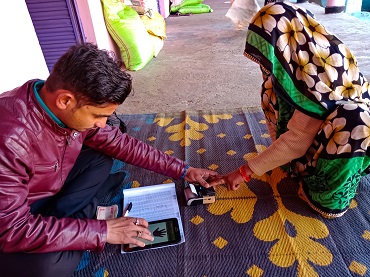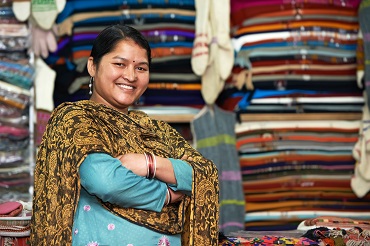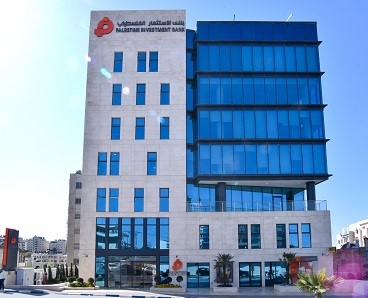Blog
Opportunities for growth within a “new normal”
Jul 16, 2020

A virtual roundtable summary.
Due to the COVID-19 pandemic, the global economy is projected to suffer the sharpest contraction since the great depression of the 1930s. To forecast what is happening with the SME sector, we must look at the macro-economic picture. As part of a weekly webinar series on COVID-19 mitigation efforts, the SME Finance Forum hosted a virtual roundtable to discuss the macro-economic forecast of the COVID-19 impact and to share views on what support the SME sector should expect from the public and financial sectors. During the panel, hosted and moderated by Matthew Gamser (IFC), Jean Pierre Lacombe (IFC), Monica de Bolle (Peterson Institute) and Giuseppe Gramigna (SME Consultant,) shared their knowledge and thoughts on what it will take for the economy to recover from the COVID-19 crisis.
To get a sense of the macro-economic outlook, one must look at the nature of the pandemic and the scenarios forthcoming from epidemiological data. According to many global health modeling experts, COVID-19 will be with us for quite some time, until 2022 or later, and the impact on societies and economies in the near and longer-term will be far-ranging and broad. The economic recovery is likely to take quite a long time. While the 2008-2009 crisis was an endogenous crisis with high moral hazard of financial institutions, the COVID-19 crisis is an exogenous crisis affecting all sectors with the productive sector directly affected. The proxy of industrial production shows most countries are facing precipitous contractions, with the current 13% decline in global trade negatively affecting many emerging markets that are connected to global value chains. With a move to more onshoring and nearshoring, globalization will decline further as nationalism and protectionism rise in many countries due to national security concerns, strained medical capacities, political clashes, and mass unemployment.
In response to the economic downturn, households and corporates are changing their behaviors to preserve cash with households saving more, eschewing more debt, and increasing overall frugality. For the corporate sector, they are bringing more working capital back onto their balance sheets with expectations of a credit crunch. The pandemic is accelerating changes that were already underway, such as the digital economy and a growth in capital markets as banks sustain tight lending standards.
It is under these circumstances and economic forecasts that we look at the impact on the SME sector, which has been severely impacted by the COVID-19 pandemic, with SMEs in the consumer services and tourism industries, especially hard hit. So, what is the big picture for small businesses?
The path to recovery varies across countries depending on their response to the pandemic. Latin America and Africa are anticipated to be most vulnerable, while Asia is expected to recover faster than others. Latin American countries have not grasped the severity of the virus as a whole and have been lagging in their responses, which in turn is leading the region to face grim prospects going forward. For instance, Brazil and Mexico, the two largest economies in Latin America, are conservatively expected to experience downturns in the growth of 9.1% and 10.5%, respectively, in 2020. Governments in Latin America are struggling to find the right measures as large fiscal packages are not as successful at reaching their targets as a significant share of their labor markets are informal. From 50% to as much as 80%, these are the first ones to suffer and lose their livelihoods. As a result, cash transfer programs are showing some success as they raise consumption immediately and increase tax revenues that support municipalities.
Sadly, policy measures through financial institutions are also failing SMEs since FIs are wary and cautious under uncertainty. As a result, increased liquidity through guarantees schemes and other tools hasn’t translated into more credit for SMEs when they have needed it. This is where government policy is falling short with dire consequences, as SMEs will go bankrupt because they can’t access credit, leading to mass unemployment. In contrast, larger companies can access credit, resulting in a higher concentration of larger companies causing significant distortions in those markets.
While there will be long-term disruptions with firm and worker exit, speakers also shared their views on what could be most helpful to aid in recovery for SMEs. Increases in economy-wide enablers such as information and networks to lower the number of exits and targeted interventions by governments and financial institutions to identify who exited and who has remained and tailoring interventions accordingly. Measures such as partial credit guarantees may be effective in some markets while limited in others (as seen in Latin America). The provision of information, training, networks, partnerships, and market exploration, when combined with financial assistance, may have a more significant total impact in some markets.
Another suggestion to SMEs is to carry enough liquidity and secure more if you can. If you are/have pivoted from your core business to a “COVID” business such as making PPE, focus back on your core business as the crisis will end, and you want to be in a strong position when that happens. And finally, look for opportunities for supply chain development and participation that is closer to home as that is going to be a major theme going forward in many countries.
Although primarily quite sobering with all speakers reiterating that we are in this for the long haul in terms of recovery, the session ended with some positive predictions of what shape a “new” normal might take. Possible growth areas include distributed manufacturing, AI, robotics, semiconductors, solar, wind, home office supply and 3D printing, as the longer we are in this pandemic, the more likely the changes in peoples’ attitudes and behaviors will become permanent. To realize an economic recovery, we will need to achieve a stranglehold on the COVID pandemic for as Monica stated near the end of the session, “we cannot separate one thing from the other, as the pandemic and economic crises and recoveries are linked.”














































